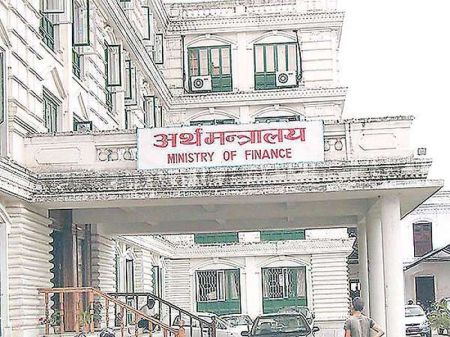Merger and Acquisition

The number of banks and financial institutions (BFI) Nepal has, is by no means small for the size of the economy and geography. The central bank’s initiative to lower the number of BFIs through mergers is a a quite welcoming attempt. Mergers and acquisitions, if well executed will result into a more effective, efficient and a stronger company.
At the moment, merger is not a challenge for the financial market but the number of BFIs in the given size of geography and economy definitely is. Large number of BFIs would mean more amounts of capital accumulated in smaller chunks as fixed assets and capital of the banks that could have been invested in other productive areas. So far, we have not seen banks investing in large projects and making long term investments. This would be possible when banks with strong capital base emerge. It is highly unlikely to happen when capital is spread across more than 30 commercial banks. It is always better to have 10 large banks than having 30 small incapable ones. At the moment, number of problematic BFIs is also increasing. Merger and acquisition should ensure merger of two or more companies into one to make a single strong and capable bank. However, so far, we have not seen merger of two commercial banks.
It is argued that if the number of commercial banks comes down, they will be involved in carteling. The central bank should keep an eye to prevent such irregularities. But, when two commercial banks merge, one of the foremost impacts is the large capital base. This makes possible to invest in large projects and create a ground for long term investment which is missing at the moment. The development so far in the merger and acquisition is encouraging but I think it should reach the next level soon.
- Sambida Sharma, Balkumari
Summer Market Trends
As the writer argues in ‘Summer Market 2013’ (Vol. 12 Issue 8 of New Business Age), growing urbanisation and popularity of nuclear families have played their part in giving certain products a boost in the market. However, I believe that these factors are not the only contributors. I think that purchasing power plays a more important role in determining consumption pattern. Fuelled by remittances, purchasing power has been on the rise in Nepal. This has driven up consumption.
- Bhimsen Bharati, Kapan
HELVETAS Partner in Sustainable Development
I went through the Development- Partner story about HELVETAS in June 2013 issue. The story revolves around the positive work of the organisation. What it is doing for the benefits of the Nepali people is really encouraging. However, the article failed to provide details about more of its activities. I would have loved to know more about the projects of HELVETAS in detail. For example, about their target areas and people and the extent of the benefits it has created and also the negative impacts it may have caused. It would make the story a more interesting read if views of beneficiaries too were incorporated.
- Sushil Chhetri, Budhanilkantha
Bit of Entertainment Business
I have been reading your magazine regularly and I appreciate your efforts to create a business-literate readership. It is good to see that your media is covering different issues related to business and economy. It would also be appreciable if you also could write about entertainment business. I think that would make the magazine more fascinating to read, and will attract young readers too.
- Santosh Dhungana, Chabahil
Century of Indian Cinema
When the Indian cinema was celebrating its centenary, it had already collected non-Indian audience base from a number of countries. The Indian cinema or the movie industry popularly known as Bollywood is one of the largest entertainment industries in terms of number of movies produced every year. Though it may have surpassed Hollywood’s annual production, it is yet to equalise in terms of revenues collected. From the South Asian perspective, small entertainment industries like that of Nepal could learn a lot from the burgeoning industry next door. But, most of the countries in South Asia have put a ban on Indian cinemas for a long time. Even Nepal had made numerous attempts in the past to ban Hindi cinema. But in absence of quality cinemas produced locally and the access to foreign movies through the satellite televisions, Internet and pirated cheap DVDs, the attempt always remained a failed one as the viewers were never ready for the ban to be imposed. Similar was the situation in other neighbouring countries. There is a huge lack of creativity in the local cinema industry, and instead of getting inspired from the neighbouring industry- the Nepali Film industry has been limited to copying Bollywood, that too badly. There is a lot to learn from a century long experience of Indian cinema and adopt the technology and techniques of storytelling they use rather than merely copying some scenes and dialogues. The neighbouring countries can learn from Indian movie industry the techniques to find a space among global audience.
- Prabhat Dhakal, New Baneshwor, Kathmandu
Mail your feedback to P O Box 14197, Kathmandu or Email to [email protected]






















